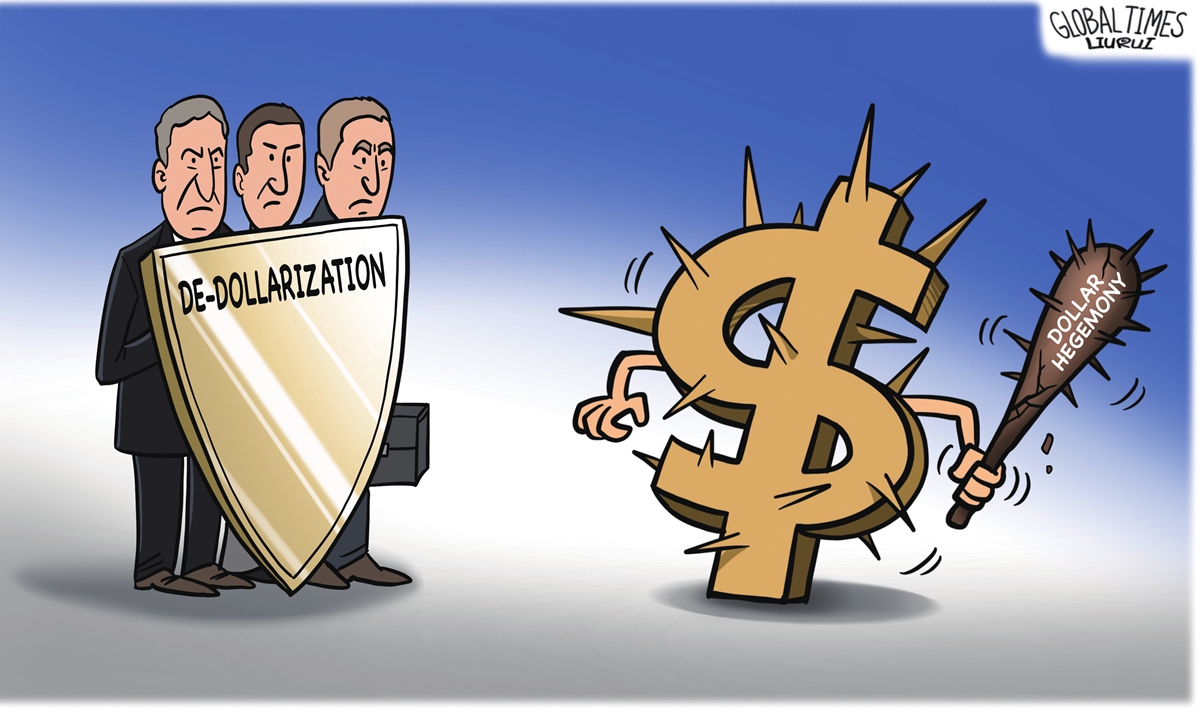BEIJING – Russia is seeking to settle trade with ASEAN countries in their local currencies in a bid to boost bilateral trade, according to media reports on Thursday, signaling the latest de-dollarization effort by Moscow as it faces sweeping Western sanctions over the Ukraine crisis.
Russia’s efforts come as many other emerging market economies, including China, India and ASEAN, are moving to use local currencies to settle trade amid chaos in the global payment system created by US-led Western sanctions.
The de-dollarization trend is conducive for China’s foreign trade as well as the yuan’s internationalization, analysts said.
While attending the ASEAN Regional Forum in Jakarta, Indonesia, Russian Foreign Minister Sergey Lavrov suggested settling trade between Russia and ASEAN with their national currencies, the Nikkei Asia reported on Thursday.
“Practical cooperation interests between Russia and ASEAN countries, including Indonesia, will be answered with the launch of consultations on the use of national currencies in mutual settlements,” Lavrov said in an interview with Indonesian newspaper Kompas on Wednesday.
This is all part of Russia’s de-dollarization effort, which is actually good for Russia, ASEAN and other countries amid the increased weaponization of the dollar by the US, according to Song Kui, president of the Contemporary China-Russia Regional Economy Research Institute.
Song said both the yuan and ruble have been used mostly in China-Russia trade, especially for energy, which helped boost growth in bilateral trade.
China’s trade with Russia surged 50.9 percent year-on-year to about 791.43 billion yuan ($110.49 billion) in the first half year, with China’s exports to Russia jumping 91.7 percent and imports from Russia up 28 percent, according to Chinese customs data on Thursday.
Despite the US-led West’s sanctions against Russia and baseless accusations against China’s normal trade ties with Russia, China and Russia are aiming to lift bilateral trade to $200 billion by the end of 2023.
Bilateral trade activities are picking up – for example, the 7th China-Russia Expo held in Yekaterinburg, Russia from July 11 to 13. More than 300 Chinese enterprises attended the event, which was largest scale so far, Shu Jueting, a spokesperson for the Chinese Commerce Ministry, said on Thursday.
“Chinese and Russian enterprises had comprehensive communications and exchanges on cooperation in areas such as energy, agriculture, forestry, industry, transportation and people-to-people exchanges and culture,” Shu told a press conference.
“The US cannot stop normal cooperation among countries, because such cooperation benefits the peoples of the countries,” Song said.
The ill-intended US attempt to undermine normal economic and trade cooperation among countries will hurt its own interests, Song noted.
Many countries have switched to the yuan for trade. For example, Indian refiners have begun paying for some oil imports from Russia that way. In Latin America, Argentina began to use the yuan to settle part of its debt with the IMF for the first time on June 30.

